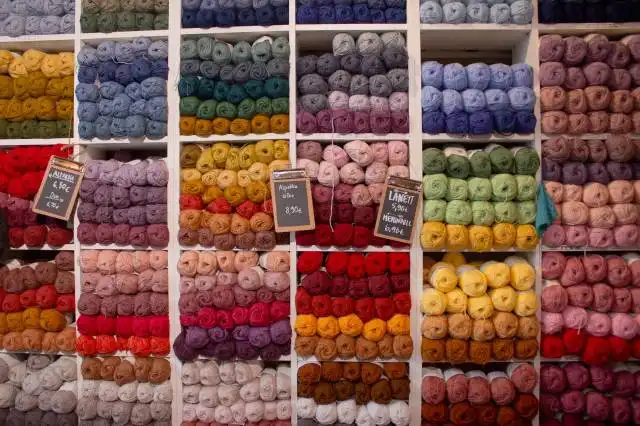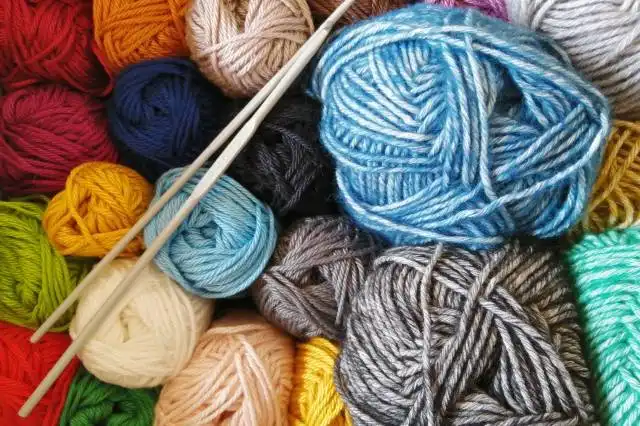Start a Bead Store
Turning Your Passion into Sparkling Business Success
| Updated


BEAD STORE
Be prepared to immerse yourself in a world filled with color and creativity as you dive into running a bead store. From the passionate hobbyists meticulously crafting their own jewelry to seasoned designers seeking that perfect bead for their next killer design, you'll cater to all! Basically, a bead store is your go-to-shop selling a variety of beads, often alongside other jewelry-making supplies. Being approachable and armed with some solid knowledge about bead types and trends can take you a long way in this sparkling business endeavor!
Jump to Business Plan
RELATED BUSINESS IDEAS
Browse ALL Arts & Crafts Business Ideas
Discover Your Perfect Domain
Unlock the door to your online success with our hand-picked selection of premium domain names. Whether you're starting a new venture or rebranding an existing one, the right domain can set the tone for your digital presence. Browse through our curated list, each with its unique potential to enhance your brand's visibility and credibility.
BEAD STORE MINI BUSINESS PLAN
This a quick reality check to help you identify the strengths and weaknesses of your business concept before you dive in.
Expected Percent Margin:
- Gross Margin: 50%
- Net Profit Margin: 10-15%
Earnings Expectations:
- Daily Earnings: $100 - $400
- Weekly Earnings: $700 - $2,800
- Monthly Earnings: $3,000 - $12,000
- Annual Earnings: $36,000 - $144,000
Actions to Hit Those Numbers:
Inventory Management:
- Initial Investment: Depending on the diversity and quality you want to achieve, you should aim to invest between $10k to $20k in starting inventory.
- Supplier Relations: Cultivate strong relationships with bead manufacturers and wholesalers for best prices.
Marketing and Customer Acquisition:
- Online Presence: Host bead tutorials on YouTube, hold Instagram live sessions and launch an e-commerce website.
- Local Communities: Connect with local craft clubs, jewelry makers, and art schools.
Sales and Customer Experience:
- Peer Interaction: Regularly host workshops and beading parties for customers at your store.
- Diversify Product Offering: Include more than just beads, like strings, jewelry making tools, craft books, etc.
Cost Control:
- Negotiate Lease: Choose a location and negotiate a lease where the rent is below 10% of your projected gross sales.
- Budget for Utilities and Maintenance: Aim to spend no more than $200-$400 per month.
Business Operations:
- Operating Hours: Aim to be open at least 6 days a week, if not 7, for at least 8 hours a day.
- Transaction Volume: Work towards targeting 20-30 transactions per day, with an average sale price of $20-$40 depending on your offerings.
Remember, these values are just estimates. Actual figures can vary based on location, competition, market trends, and the specifics of your business plan. Always seek advice from a financial advisor to get tailored recommendations.
NOT WHAT YOU HAD IN MIND? Here are more ideas



Browse ALL Arts & Crafts Business Ideas
Grab Your Business Website Name
Before you get caught up in the whirlwind of setting up your business, invest in a domain name. It's a small but significant step that lays the foundation for your brand and makes it easier for customers to find and trust you. Just like you wouldn't build a house without securing the land first, don't build a business without securing your domain name.
"Why? Can't that wait?" Here's why it shouldn't
Step 1: Determine if the Business is a Right Endeavor
Breakdown of Startup Expenses
Before starting a bead store, it is important to understand the costs associated with the business. This includes the cost of the inventory, the cost of the space to store the inventory, the cost of any licenses or permits, and the cost of any equipment or furniture needed. Additionally, there may be costs associated with marketing and advertising, such as website design and printing costs. It is important to research all of these costs and create a budget to ensure that the business is feasible.
Breakdown of Ongoing Expenses
Once the bead store is up and running, there will be ongoing expenses associated with the business. This includes the cost of the inventory, the cost of the space to store the inventory, the cost of any licenses or permits, and the cost of any equipment or furniture needed. Additionally, there may be costs associated with marketing and advertising, such as website design and printing costs. It is important to research all of these costs and create a budget to ensure that the business is sustainable.
Examples of Ways to Make Money
There are many ways to make money with a bead store. The most common way is to sell the beads and other supplies directly to customers. Additionally, the store can offer classes or workshops, host events, or partner with other businesses to create unique products. Additionally, the store can offer custom services, such as creating custom jewelry or offering repairs. It is important to research the local market to determine which of these options will be the most profitable.
Step 2: Name the Business
When naming a business, it is important to choose something that reflects the values and mission of the business. It should be something that is easy to remember and that customers can relate to. It should also be something that is not already taken by another business. To come up with a good name, brainstorm ideas, ask friends and family for input, and research other similar businesses. Consider using a combination of words, a play on words, or a phrase that reflects the business. It is also important to check with the local government to make sure the name is available and to register the business name. Once the business name is chosen, it is important to create a logo and slogan to go along with it. This will help customers recognize the business and create a memorable brand.
Step 3: Create a Business Plan
A business plan is essential for any business, and a bead store is no exception. It should include a detailed description of the business, its products and services, a market analysis, a financial plan, and a strategy for marketing and advertising. It should also include a timeline for when the business will be up and running, as well as a plan for how to manage the store. A business plan should be written in a professional manner and should be reviewed by a professional business consultant before it is submitted to potential investors or lenders. Additionally, the plan should be updated regularly as the business grows and changes.
Step 4: Obtain Financing
Once the business plan is complete, the next step is to obtain financing. This can be done through a variety of sources, including personal savings, loans from family or friends, or a loan from a bank. It is important to carefully consider the terms of the loan and to make sure that the loan will be able to be paid back in a timely manner. Additionally, it is important to research the different types of financing available and to make sure that the financing is appropriate for the business.
Step 5: Find a Location
Finding the right location for a bead store is essential. The location should be easily accessible and should have adequate parking. Additionally, the store should be located in an area that is frequented by potential customers. It is important to consider the size of the store and the amount of inventory that will need to be stored. It is also important to consider the cost of the rent and the terms of the lease.
Step 6: Purchase Supplies
Once a location has been secured, the next step is to purchase the necessary supplies. This includes beads, findings, tools, and other supplies needed to create jewelry. It is important to research the different types of beads and findings available and to purchase supplies from reputable suppliers. Additionally, it is important to purchase supplies in bulk in order to get the best prices.
Step 7: Hire Employees
Hiring employees is an important step in opening a bead store. Employees should be knowledgeable about the products and services offered and should be able to provide excellent customer service. Additionally, it is important to consider the cost of hiring and training employees, as well as the cost of providing benefits.
Step 8: Market the Business
Marketing is essential for any business, and a bead store is no exception. It is important to create a marketing plan that includes both online and offline strategies. This could include creating a website, advertising in local newspapers and magazines, attending trade shows, and creating social media accounts. Additionally, it is important to create a customer loyalty program in order to encourage repeat customers.
Step 9: Open the Store
The final step is to open the store. This includes setting up the store, stocking the shelves, and training employees. It is important to create a grand opening event to draw in customers and to create a buzz about the store. Additionally, it is important to create a system for tracking sales and inventory in order to ensure that the store is running smoothly.
Step 10: Monitor the Business
Monitoring the business is an important step in ensuring the success of the bead store. This includes tracking sales, inventory, and customer feedback. It is also important to stay up to date on the latest trends in the industry. This can be done by attending trade shows, reading industry publications, and networking with other bead store owners. Additionally, it is important to keep track of expenses and profits to ensure the business is running efficiently. By monitoring the business, owners can identify areas of improvement and make necessary changes to ensure the success of the business.
It is also important to have a plan in place for when things don’t go as expected. This includes having a plan for dealing with customer complaints, managing cash flow, and dealing with unexpected expenses. Having a plan in place can help owners make quick decisions and reduce the risk of making costly mistakes. Additionally, it is important to have a plan for dealing with slow sales periods. This can include offering discounts, running promotions, or introducing new products. By having a plan in place, owners can ensure the success of their business even during slow periods.
EXPLORE MORE CATEGORIES
Browse ALL Business Idea Categories
TAKE THE NEXT STEPS










